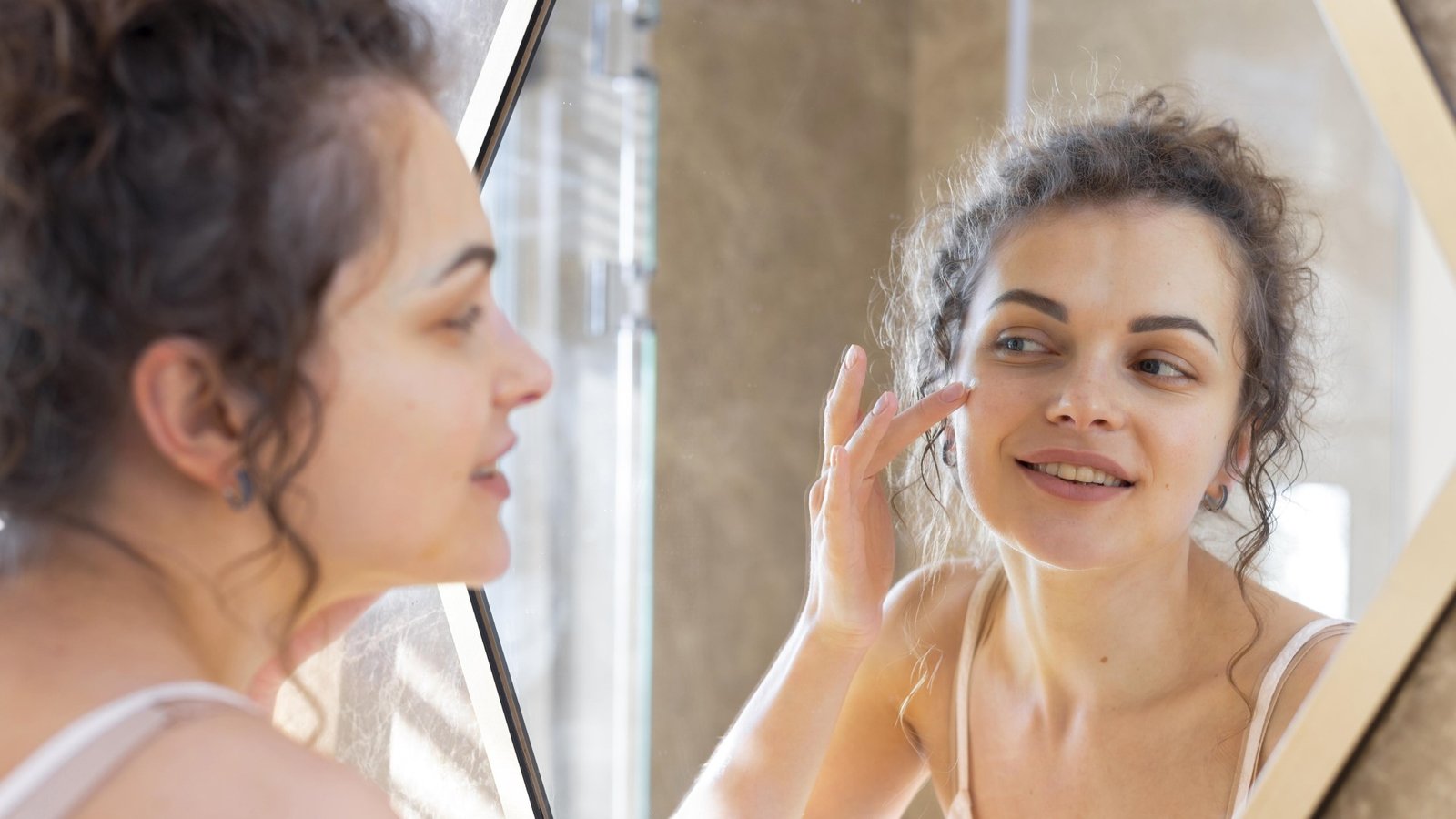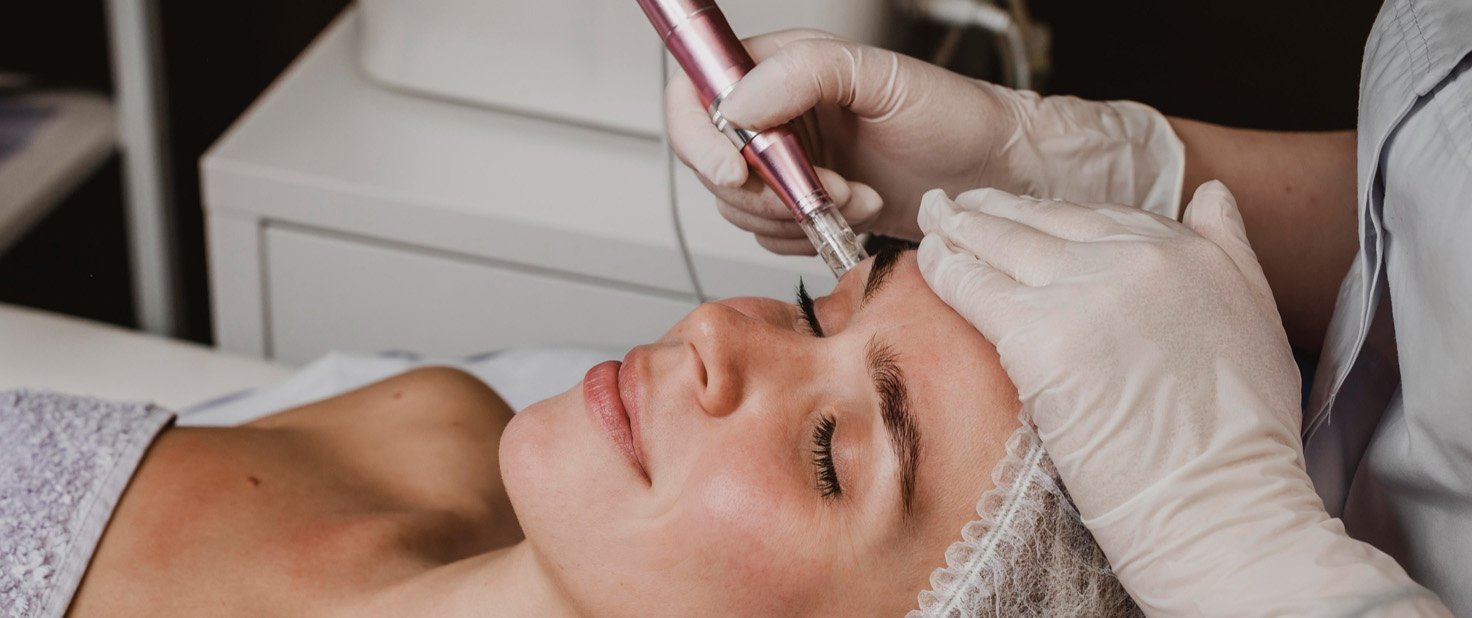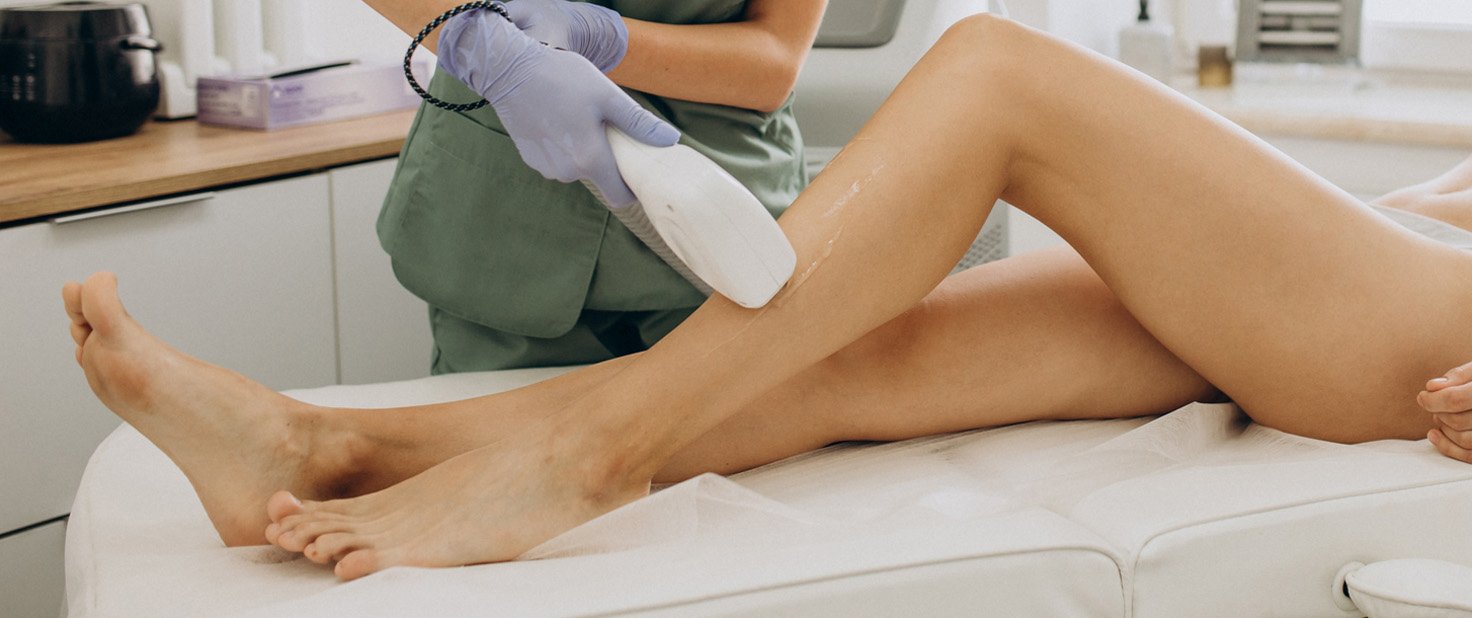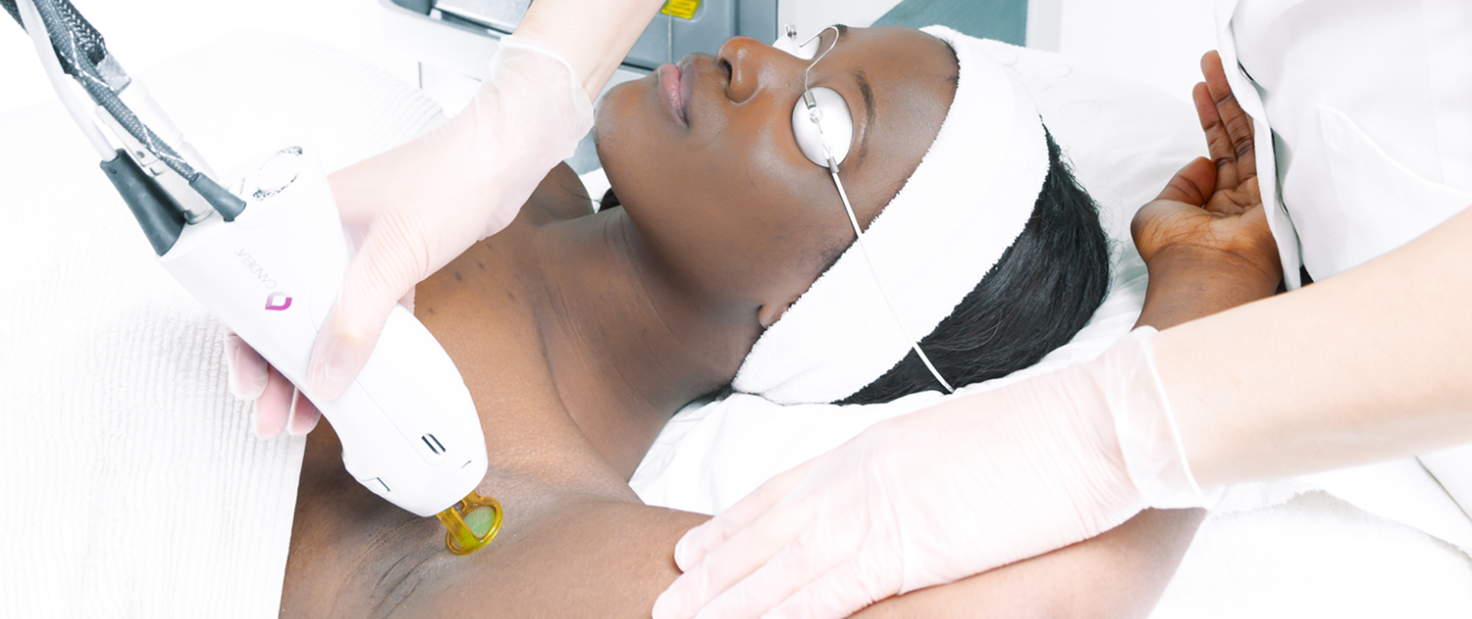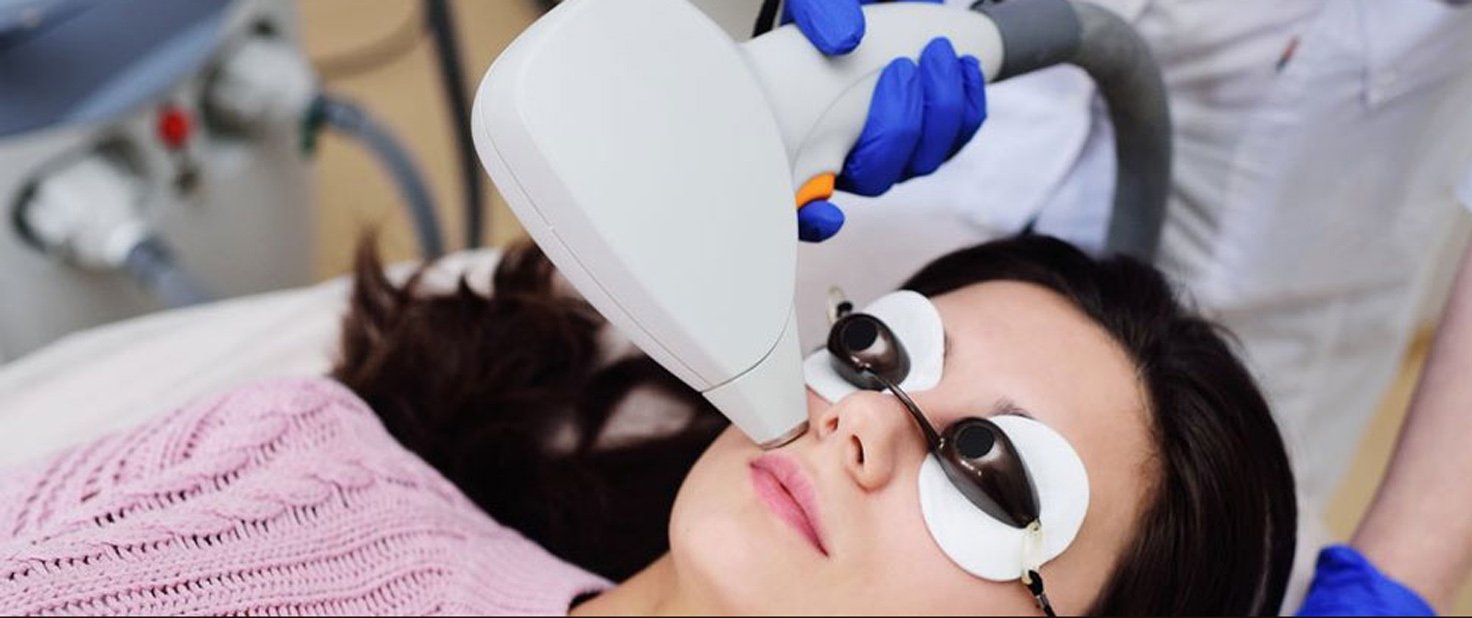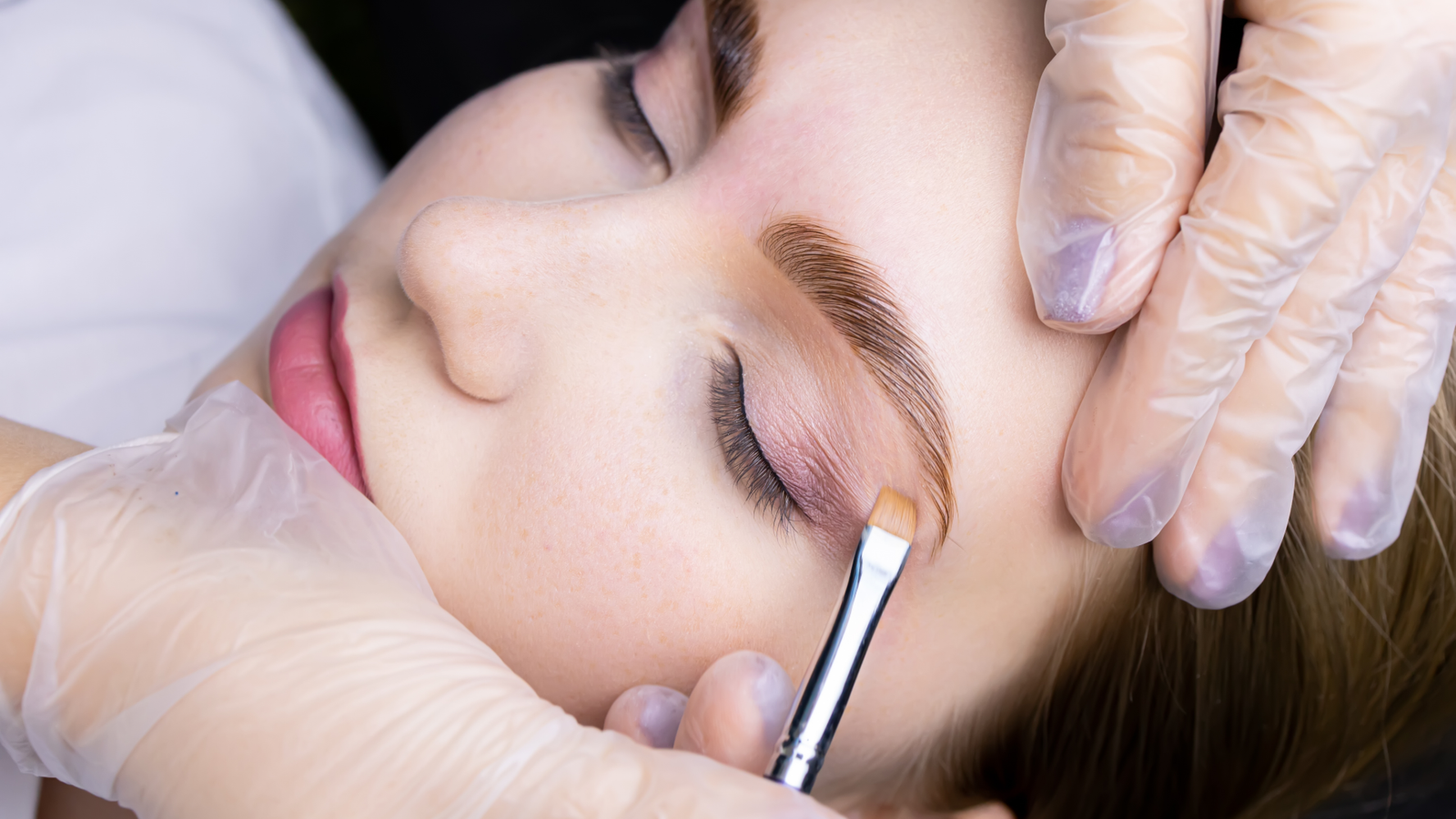LightSheer Desire Diode laser is a new technologie that combines a precise wavelength to permanently destroy hair and a suction feature to numb the nerves in order to make a laser treatment more comfortable on larger body areas, such as laser for a full back, full legs, full arms as well as laser treatments for abdomen and chest. A separate patch test will be required to establish the correct settings for your skin type and to make sure that the treatment is safe yet effective.
The manufacturer of the LightSheer Desire laser recommends 6-8 sessions for laser treatments for women and 8-10 sessions for men. However, from experience, we do not recommend to buy a course of 6 sessions (for women) or 8 sessions (for men) as LightSheer is a medical grade laser (very powerful), and you may not need more than 6 sessions if you are a woman, or more than 8 sessions if you are a man.
It is recommended to complete your laser hair removal course within the space of 12 months.
What is the purpose of using the LightSheer laser?
The LightSheer laser is an advanced medical grade device designed specifically for effective and long-lasting hair removal. Its diode laser technology operates at a wavelength of 805 nm that is precise to destroy hair follicles permanently. This wavelength is carefully selected for its ability to target the melanin in the hair root. The 805 nm wavelength is particularly effective for treating a wide range of skin types.
The laser produces a focused beam of light that is absorbed by the melanin pigment in the hair shaft. This absorption converts light energy into heat, effectively damaging the follicle and cuts off the blood supply to the affected follicle inhibiting future hair growth. The system allows for adjustable fluence, or energy per unit area, to customize laser treatments based on the client’s skin type, hair colour, and thickness. Higher fluence settings provide more intense energy for effective follicle destruction, while lower settings ensure safety and comfort for sensitive or darker skin tones.
LightSheer technology incorporates additional features to enhance both efficacy and the client’s comfort. For instance:
- the high-speed vacuum-assisted handpiece gently stretches the skin during treatment, reducing melanin density in the epidermis and ensuring that the laser energy is directed precisely into the follicle. Laser hair removal treatments with the suction handpiece are suitable for larger body areas.
- The other handpiece called LightSheer XC is more suitable for the treatment of smaller areas, such as upper lip or chin. The ChillTip cooling mechanism on this handpiece cools the skin’s surface, protecting it from overheating and reducing discomfort during the procedure.
These innovations allow the LightSheer system to deliver precise and efficient hair removal with minimal downtime, making it a popular choice for patients seeking a reliable and advanced solution for unwanted hair.

Is LightSheer a good laser?
LightSheer diode is a medical grade laser and the ‘Roll-Royce’ of laser hair removal. The patented wavelength and the technology ensure effectiveness and safety of the laser hair removal procedure. This process is also known as laser hair removal reduction to reflect the fact that in some individuals the results may not be entirely permanent. For instance, it is more effective in women than men due to testosterone that drives new hair growth. Or women with hormonal imbalances may produce new hair after the treatment with time.
Is LightSheer a diode laser or IPL?
LightSheer is a diode laser, not an IPL (Intense Pulsed Light) device.
Diode lasers, such as LightSheer, operate at specific wavelengths that work precisely to target melanin in hair follicles. This targeted approach ensures effective hair removal while minimising the risk of damage to the surrounding tissue. The LightSheer laser delivers a focused beam of coherent light that permanently destroys hair follicles with growing hair in them.
In contrast, IPL uses a broad spectrum of light with multiple wavelengths, which is not so dense and is less targeted (more diffused). While IPL can be used for hair removal, it is generally less precise and may not be as effective as diode lasers for certain skin tones and hair types. The LightSheer diode laser’s specificity and advanced cooling technology makes it superior for achieving long-lasting hair removal results.
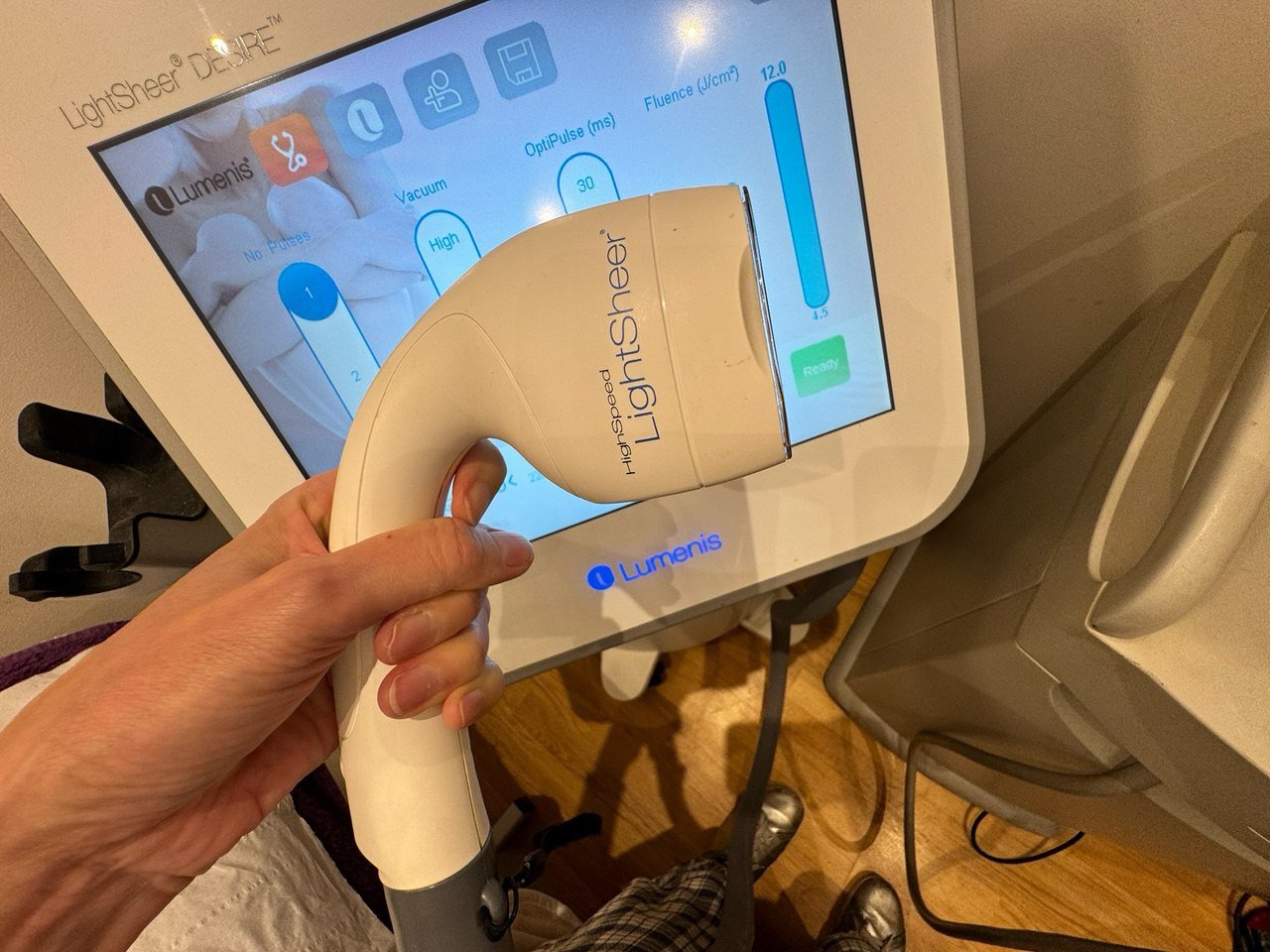
Is laser cheaper than IPL?
The IPL prices are generally cheaper than laser prices. The price reflects the complexity and maintenance cost of the equipment as well as the initial investment cost. For instance, an average price for an IPL machine ranges between £3000-£12000 while a new LightSheer laser that Body Silk Clinic invested in may cost around £47,000. The laser treatment prices have to reflect it.
However, clients when choosing a laser clinic, need to look at the technical characteristics of the laser equipment that the clinic has: less effective laser machines may require a higher number of sessions and may eventually cost more in the long-run. In addition, medical grade lasers deliver a more effective result of removing hair permanently.
Benefits of the LightSheer Laser
The main benefit of the LightSheer laser is by all means its effectiveness. The patented wavelength of 805nm is designed to be precise to permanently destroy hair follicles in the dermis. Follicles when exposed to such wavelengths will never produce hair again. The reason why it is not possible to destroy all hair follicles in one session is the hair cycle: dormant hair at the time of the treatment will not be targeted and need to be waited to come to its active phase for the laser to be able to target it. We occasionally have clients who come to see us after they had numerous laser sessions with a different machine elsewhere. As a result, their hair growth becomes finer which makes it harder for a good laser to target as the pigment in the hair root faded due to multiple and less effective heat exposure. With the medical grade LightSheer diode laser our female clients may need as little as 4-6 sessions while male clients generally may need a couple sessions more.
The Science Behind Laser Hair Removal
Laser hair removal has become one of the most effective and sought-after aesthetic treatments for reducing unwanted hair. Its success is rooted in advanced laser technology that can selectively target and destroy hair follicles without affecting the surrounding tissue. To fully understand its effectiveness, it is essential to explore the underlying science, the history of its development, and the advancements that have made it safer and more efficient.
The journey of laser hair removal began with the invention of the first functional laser by Theodore Maiman in 1960. Although these early lasers were not designed for hair removal, their medical applications paved the way for future breakthroughs. By the 1970s, dermatologists observed unintended hair loss as a side effect during certain treatments. This observation led researchers to investigate lasers specifically for hair removal, culminating in the approval of the first laser device for this purpose in 1996. Known as the Q-switched ruby laser, it operated at a wavelength of 694 nm and was particularly effective for individuals with fair skin and dark hair. However, it was less suitable for darker skin tones due to the risk of skin damage. Over time, newer technologies, such as the alexandrite laser (755 nm) and the diode laser (810 nm), were developed. Diode lasers, such as the LightSheer system, became especially popular because of their precision in targeting hair follicles at the patented wavelength of 805 nm.
The effectiveness of laser hair removal is based on the principle of selective photothermolysis. This process uses specific wavelengths of light to generate heat that targets melanin, the pigment in hair follicles. Melanin absorbs the laser light, transforming it into heat that damages the follicle and hinders future hair growth. The precision of this process ensures minimal impact on surrounding skin tissues.
Three key factors influence the success of laser hair removal: wavelength, pulse duration, and fluence.
- The wavelength determines the depth of penetration and melanin absorption. For instance, diode lasers like the LightSheer operate at an 805 nm wavelength, which is optimal for targeting hair follicles while being safe for a wide range of skin and hair types.
- The pulse duration is carefully calibrated to match the thermal relaxation time of the hair follicle, ensuring it heats up effectively without transferring excessive heat to the surrounding skin tissue.
- Fluence, or the energy delivered per unit area, is adjusted based on an individual’s skin tone, hair colour, and thickness to maximise efficacy while minimising the risks.
Modern laser systems have incorporated features to improve both the safety and comfort of the procedure. For example, technologies such as contact cooling protect the epidermis from overheating, reducing discomfort and the risk of burns. Devices, such as the LightSheer Desire laser also employ vacuum-assisted technology, which stretches the skin during the treatment to bring hair follicles closer to the laser’s energy source. This mechanism not only improves efficiency but also reduces the concentration of melanin in the epidermis, allowing higher energy levels to be used safely.
Over the years, advancements in laser technology have expanded the range of candidates for hair removal. Early systems were limited to individuals with fair skin and dark hair because the contrast between the hair and the skin made it easier to target melanin. Today, lasers with longer wavelengths can safely treat darker skin tones by penetrating deeper into the skin and bypassing melanin in the epidermis. This has made laser hair removal a viable option for individuals across the Fitzpatrick skin type spectrum that distinguishes between six skin types.
Despite its many advantages, laser hair removal is not entirely permanent. The treatment is most effective during the anagen phase of the hair growth cycle when hair is actively growing and is still connected to the follicle. Because not all hair is in this phase simultaneously, multiple sessions may be necessary to achieve the best hair reduction results. Additionally, the procedure is most successful for individuals with dark, coarse hair and lighter skin, as the contrast enhances the laser’s ability to target the melanin in the hair root.
Laser hair removal has transformed from a novel concept into a reliable and effective solution for unwanted hair removal. From its early days with rudimentary ruby lasers to modern diode systems, such as the LightSheer Desire, the technology has continuously evolved to improve safety, efficacy, and patient comfort. At Body Silk Clinic, we always encourage our clients to understand the science and innovation behind laser hair removal, so that they could make an informed decision about investment in permanent laser hair removal.
Which hair removal laser is best?
The choice of the best hair removal laser depends on several factors, including the individual’s skin type, hair colour, and treatment goals. Among the leading technologies in laser hair removal, diode lasers, particularly the LightSheer Desire, have emerged as one of the most advanced and effective solutions for a wide range of clients. This system stands out due to its combination of precision, efficiency, comfort and safety making it a top contender for individuals seeking long-lasting hair removal.
The LightSheer Desire is a diode laser system that operates at an optimal wavelength of 805 nm, specifically designed to target melanin in hair roots. Its wavelength strikes a balance between sufficient penetration depth and effective melanin absorption, enabling the laser to reach the hair follicle safely. This makes the LightSheer Desire suitable for various skin types, including fair and most of the dark skin tones. Compared to other laser systems, such as IPL (Intense Pulsed Light) or alexandrite lasers, the diode laser technology of the LightSheer Desire offers superior precision and safety.
- One of the defining features of the LightSheer Desire is its patented ChillTip™ technology for its XC handpiece which is reported to enhance the client’s comfort and safety. The ChillTip actively cools the skin’s surface during treatment, minimising heat sensations and protecting the epidermis from potential burns. Ice packs may also be used during the treatment to aid extra cooling of the surrounding tissue. This cooling mechanism is particularly beneficial for patients with sensitive skin or those undergoing treatment in delicate areas, such as bikini and armpits.
- Additionally, the LightSheer Desire incorporates a vacuum-assisted HS handpiece, which, with the help of suction, stretches the skin and brings hair follicles closer to the laser energy source. This unique feature ensures efficient energy delivery while reducing discomfort, making the procedure faster and more tolerable for our clients.
- The system’s adjustable settings and customisable treatment parameters allow our laser practitioners to tailor the procedure to each individual’s needs. For instance, the fluence (energy density) can be adjusted based on the client’s skin type, hair colour, and thickness. This level of customisation ensures optimal results while reducing the risk of side effects, such as hyperpigmentation or irritation or burns. The LightSheer Desire’s large treatment spot sizes also contribute to faster sessions, making it a practical option for treating larger areas, such as legs, back, abdomen or chest.
- When compared to other hair removal lasers, the LightSheer Desire consistently delivers high efficacy and long-lasting results. The diode laser technology effectively targets hair during the active growth phase (anagen), ensuring maximum follicle damage and significant hair reduction over a series of treatments. While other systems, such as the alexandrite or Nd:YAG lasers, have their advantages, the LightSheer Desire is particularly versatile and well-suited for a wide range of skin types and hair textures.
The best hair removal laser is one that combines safety, effectiveness, and clients’ comfort while being adaptable to individual goals. The LightSheer Desire excels in all these areas, offering state-of-the-art diode laser technology with innovative features, such as ChillTip cooling and vacuum-assisted delivery, making this laser the ‘Rolls-Royce’ of hair removal methods. Its ability to provide precise, efficient, and comfortable treatments makes it a leading choice for our clients and practitioners, solidifying its reputation as one of the best options in laser hair removal.
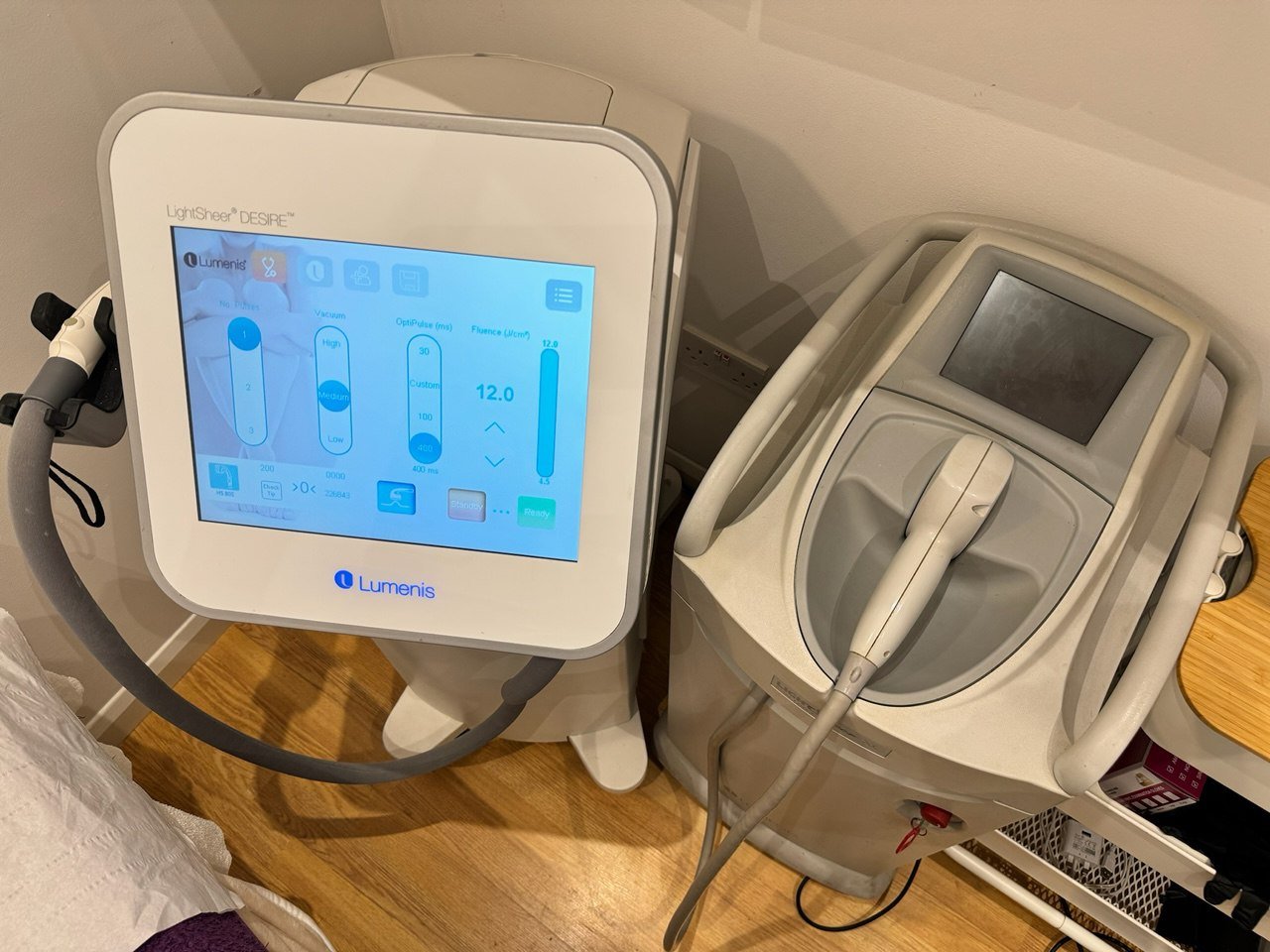
Why can all of the hair be permanently removed in one laser session? Why do we need to come for a laser session several times?
The reason why the hair cannot be destroyed in one session is due to the fact that our hair grows in cycles: all hair in a growing phase at the time of the treatment will be permanently destroyed. Then, you will have to wait between 4-6 weeks (depending on the body area) until the next cycle of hair that was in a dormant phase, grows into an active phase, so that the laser beam would be able to target the pigment in the hair in a growing phase, and destroy it for good by cutting off the blood supply to the follicle. When it happens, follicle will never be able to produce hair again.
Book your patch test today to see if you are suitable for laser hair removal treatments with the LightSheer laser.






